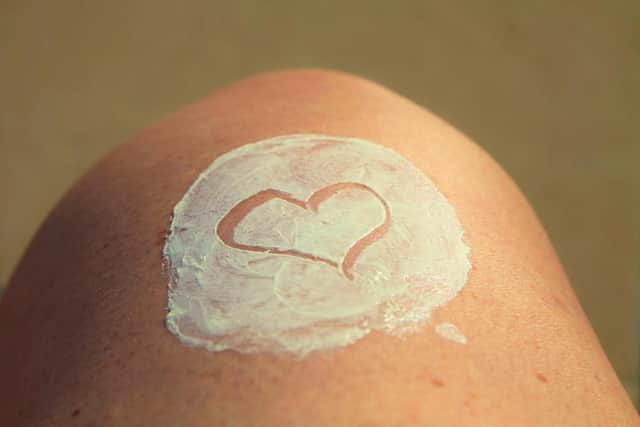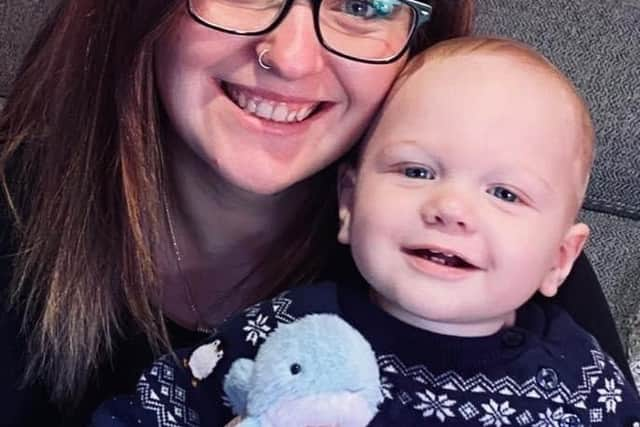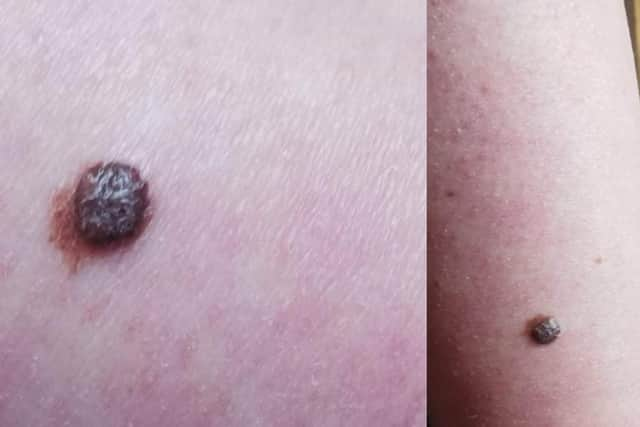Skin cancer can be prevented but cases on the rise - three women share their stories
and live on Freeview channel 276
The British Skin Foundation says at least 100,000 new cases are diagnosed each year and the disease kills more than 2,500 people in the UK - that works out at seven people every day. But it is also one of the most preventable cancers.
Eleanor Lloyd, British Skin Foundation spokesperson said: "UV radiation from the sun can cause damage to the skin and UV exposure is actually the main preventable cause of skin cancer.
Advertisement
Hide AdAdvertisement
Hide Ad"It is vital to protect yourself from the sun by covering as much skin as possible with clothing and a hat, wearing a sunscreen with SPF30 or higher, wearing sunglasses to protect your eyes and seeking shade between the hours of 11am and 3pm when the sun is at its strongest.”


Natalie Simac, from Emsworth, was first diagnosed with a malignant melanoma at the age of 19. She was referred to a dermatologist due a high number of irregular moles and a history of skin cancer in her family.
At the appointment the skin specialist took a biopsy of a mole on Natalie’s ankle, it came back as being a malignant melanoma and she was sent for further surgery to remove any existing cancer from the area.
After the appointment Natalie was seen everything three months, which would become six months and then yearly.
Advertisement
Hide AdAdvertisement
Hide AdShe said: “Since I was 19, I have had six malignant melanomas, over 30 mole removals, in various locations on my body and will remain under the skin care clinic for the rest of my life for regular check ups.


Natalie discovered she had a gene mutation called CDKN2A, which means she is more likely to contract malignant melanoma, breast cancer and pancreatic cancer. Since this diagnosis multiple members of her family have been tested and carry the gene.
She said “I am incredibly lucky and the constant check ups with specialist doctors has meant that I have avoided having to have any serious treatment beyond surgery; my cancer has always been caught at stage 0.”
Natalie’s advice is if you are concerned about an odd looking mole is to visit a GP immediately.
Advertisement
Hide AdAdvertisement
Hide Ad“Being proactive has saved my life. It’s never a waste of time to share your concerns with a doctor and have your moles checked,” she said. “Cancer is not a death sentence if caught early. ”


Lauren Bromley was diagnosed with a malignant melanoma aged 29 on August 24, 2021. She was concerned about a mole on the back of her arm and visited the doctors in July 2020, but due to Covid they weren’t removing or doing biopsies.
“When the country started to get back to normality I booked again and saw another doctor who put me on a two week wait to get it removed.”
The mole was removed on July 13 but on a return visit in August she was told she had 2b skin cancer.
Advertisement
Hide AdAdvertisement
Hide AdOn being referred to Queen Alexandra Hospital in Portsmouth she underwent wide local excision of 2cm area on the area where the mole was removed and a sentinel lymph node biopsy. In October 2021 she found out that the cancer had not spread to her lymph nodes.
She said: “I currently still have three moles on their radar which are showing changes. I will require three monthly checks for three years and then six monthly for the last two before I am completely cancer free. I will also be required to avoid the sun and wear factor 50 every day regardless of the weather.”
Lauren’s advice to anyone who has been diagnosed is not to panic.
“It’s definitely okay to feel scared and worried but there are lots of groups and forums on social media where you can ask questions,” the Chichester resident said. “I joined a Facebook called Melanomamates which was great for me as everyone was friendly and all going through the same thing.
Advertisement
Hide AdAdvertisement
Hide Ad“I also found Macmillan very supportive and have regular contact with my Macmillan nurse to this date via email and phone. They were great with me so my husband has decided to run Brighton Marathon next year for Macmillan.
"Definitely talk about it and do not hold it in.”
In 2010 Anna Stevens noticed a mole on her left knee that she hadn’t see before, at first she didn’t think anything about it but at the end 2013 she noticed changes in the colour of the mole and it had got bigger.
In December 2013 the mole was removed for testing and the week before Christmas she received the diagnosis of melignant melanoma ‘the most serious form of skin cancer’.
She underwent second surgery in January 2014 and had further skin removed from around the scar to make sure all the cancer was gone, she was luckily given the all clear and didn’t need chemotherapy or radiotherapy.
Advertisement
Hide AdAdvertisement
Hide AdOver the next few years Anna, who lives in Bognor Regis, has had a further three moles removed.
She said: “I really feel this is a subject that should be talked about more and our children educated about the dangers of sun safety so that no one else has to go through the fear of the hearing the words you have cancer.”
Your skin colour or type is the main factor in your risk of developing skin cancer. People who burn easily in the sun are at increased risk of skin cancer.
As with all cancers early detection is key.